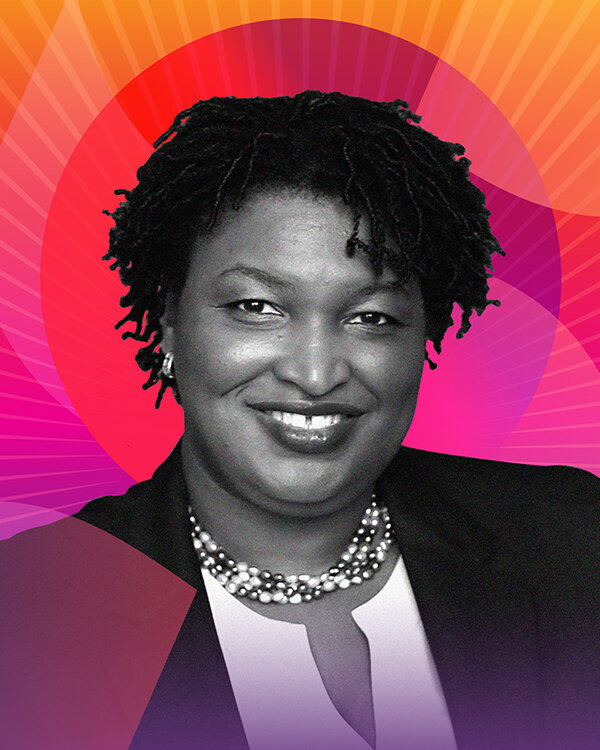By Nicole Manning
While Joe Biden and Kamala Harris have now been certified as president and vice-president elect, this 2020 election is far from over. In this election many Americans were scared and searching for a little hope with Biden and Harris, while others were hoping to indulge another four years with our former president Donald J. Trump. This has been a crazy year, with COVID-19, the Black Lives Matter Movement, the shrinking economy, and other social issues that played to each candidate’s advantage and disadvantage. However through strong campaigning and connecting with millions of Americans, the cards fell in Joe Biden and Kamala Harris’s favor, especially in two historically red states, Arizona since 1952 (except for 1966) and Georgia since 1972. But one extremely important state is Georgia, not only because of Joe Biden’s strong campaigning there but because of a local woman named Stacey Abrams.
Stacey Abrams is an African American politician, lawyer, voting rights activist, and author. But it was her non-profit organization Fair Fight, that especially brought her National attention during this 2020 election. Fair Fight was a voter outreach initiative founded in 2014 to guarantee fair elections in the state of Georgia. Fair Fight sent volunteers and other interested individuals Into diverse communities all around Georgia to educate people about the candidates, the voting process, and To assure them that their vote counts. This year Its main agenda was to eliminate the many factors that lead to voter suppression in this country. “In November of 2018 … Fair Fight launched a civil rights lawsuit in federal court against the Georgia Secretary of State’s Office and the Georgia Board of Elections, challenging the gross mismanagement of the 2018 election that discouraged and disenfranchised voters,”(Fair Fight). To further quote Fair Fight literature, the group “exposed corruption and fought back against 2019 legislation that…put special interests and vendors before voters,” (Fair Fight). This work will hopefully inspire and motivate other states to work better with its communities to get people out to vote.
This 2020 election had the highest voter turnout ever recorded—projected at 66.8% according to the Washington Post. Most previous elections have never gone above a 65% turnout. In this election year, black and brown Americans plus women were needed to push democrats over the edge. In Georgia democrats usually count on counties like DeKalb County and Gwinnett County. Democratic candidates usually need to make their mark in suburban areas, such as, Peach County, Forsyth and Cherokee counties. “America’s suburbs have always been highly contested, given the historically strong Democratic support in big cities, with Republican support in rural areas” (Frey).
According to NBC exit polls, Biden won the counties Baldwin, Bibb, and Calhoun, where 54 precent of women and 88 precent of Black Americans voted for him. While a few more women and Black Americans did vote for Trump in this election, when one looks at the bigger picture, Biden was able to connect with women and the African American vote more. So why is Stacey Abrams an important factor to the blue wave in Georgia? She brought new voices to the table, young people, people of color, and especially Black Women. In an ABC news story Abrams states, “That fight is what I think helped make the difference because voters who wanted to be heard had the ability this time to actually make it through the gauntlet [to] get to the ballot box and cast their votes,”( Scanlan and Robinson). Montenegro and Jin reported that: “77 counties total have flipped so far, and Biden won 59 of them.”
This campaign to bring new voices to the political table did not just start during this election; it took years of planning. As Steve Phillips, founder of Democracy in Color, told NBC, “It was a very methodical, step-by-step, year-by-year plan that had at its core expanding voting power in numbers of people of color in general, and African-Americans in particular,”(Delmore). When it comes to discussing voter suppression, the answer is not simple. In elections, despite commercial advertisements, the candidates’ political speeches, and other forms of outreach used by political candidates, people of color (specifically black and brown citizens) are not informed enough about what is at stake. This comes on top of minorities not feeling the need, or obligation to vote, a feeling of exclusion that people of color know too well, since black men were not allowed to vote in elections until 1870, thanks to the 15th amendment. Black women couldn’t vote until 1920, when the 19th amendment was passed. However, with their ability to actually cast a vote came many challenges and hurdles because of racist opposition to black political power.
Nevertheless, the voter education activists of Fair Fight talking to younger generations of black men and women has become an important step in bringing change to our election system. Voter education doesn’t just improve voter turnout percentages and exit poll results in small regional elections, but it also has a major impact on who becomes the next president of the United States of America. Stacey Abrams and other voting rights advocates worked together to try and get rid of voting and social stereotypes. This year was full of unknowns for the future, and getting people out for this 2020 election was crucial. Stacey Abrams and her organization Fair Fight really got people out to vote. They began by bringing to light the injustices of the voting process in Georgia, which led directly to the November Blue Wave in Georgia that allowed president-elect Joe Biden to turn the state Democratic for the first time in almost 48 years.
Worked Cited
- https://www.usnews.com/news/elections/articles/2020-06-23/the-2020-swing-states-arizona-who-votes-past-results-and-why-it-matters
- https://www.270towin.com/states/Georgia
- https://fairfight.com/
- https://www.washingtonpost.com/graphics/2020/elections/voter-turnout/
- https://www.nbcnews.com/know-your-value/feature/how-women-voters-decided-2020-election-ncna1247746
- https://www.history.com/.amp/news/african-american-voting-right-15th-amendment
- https://www.brookings.edu/research/bidens-victory-came-from-the-suburbs/
- https://www.ajc.com/politics/politics-blog/the-key-georgia-counties-to-watch-as-election-returns-roll-in/IOMFSULWBBGIBPFHQVBH6X2Y5E/
- https://www.npr.org/2020/11/18/935730100/how-biden-won-ramping-up-the-base-and-expanding-margins-in-the-suburbs
- https://www.nbcnews.com/politics/2020-elections/georgia-president-results
- https://abcnews.go.com/amp/Politics/stacey-abrams-voter-suppression-effort-made-difference-georgia/story?id=74146679
- https://www.politico.com/amp/news/2020/11/08/stacey-abrams-believers-georgia-blue-434985
- https://www.nytimes.com/interactive/2020/11/17/upshot/georgia-precinct-shift-suburbs.html

